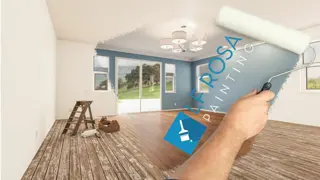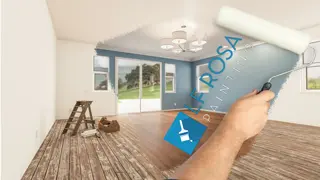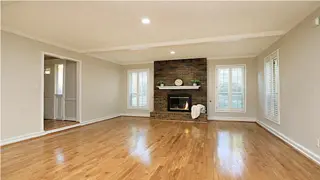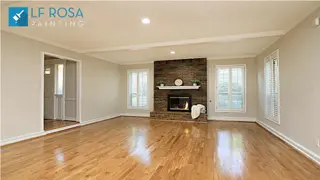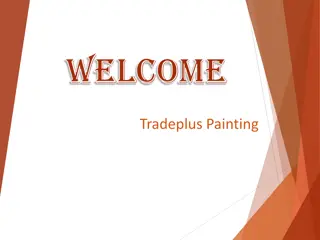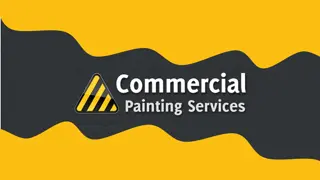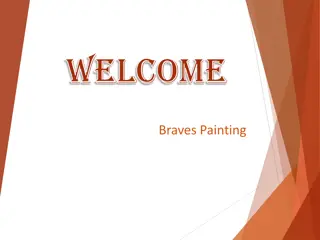Painting Mastery Video Mini-Project for High School Art Class
Explore a series of educational videos designed for high school Art I students, focusing on navigating a painting web quest, setting up a painting workspace, and cleaning up after a painting session. The videos cater to visual learners and aim to enhance students' mastery of painting techniques, tools, and art appreciation. Aligning with core curriculum standards, students will learn how to produce original artworks, understand cultural influences, and organize art exhibits.
Download Presentation

Please find below an Image/Link to download the presentation.
The content on the website is provided AS IS for your information and personal use only. It may not be sold, licensed, or shared on other websites without obtaining consent from the author.If you encounter any issues during the download, it is possible that the publisher has removed the file from their server.
You are allowed to download the files provided on this website for personal or commercial use, subject to the condition that they are used lawfully. All files are the property of their respective owners.
The content on the website is provided AS IS for your information and personal use only. It may not be sold, licensed, or shared on other websites without obtaining consent from the author.
E N D
Presentation Transcript
How to Paint Like a Master Video Mini-Project Tools for the Visualization of Information-EDTC635 Professor Abate
Target Audience There are three videos revolve around a Paint Like a Master WebQuest. These videos are a demonstrational in nature. These videos are targeted for a basic Art I class, in a High School setting.
Video #1: WebQuest Navigations This video was made for the purpose of students being able to easily navigate through the Paint Like a Master WebQuest. When the video is over, students should be able to break up into their pairs, and begin the WebQuest with confidence. It is a screen capture video, going step-by-step, making sure students understand where everything is. YouTube link: https://www.youtube.com/watch ?v=tKCv21S_IXM&list=UUXM87s cxTpFoYCcMDgi5kCg The video will be played on the screen in the media center so students can follow along with the video.
Video #2- How to set up your workspace This video is for students setting up a painting workspace for the first time. It gives student s some tips on where to place paint on their palette, and where the best place is to mix paint. It explains how to set up a palette with paint, and what painting supplies are needed such as paintbrushes, a water cup, paper towels, a canvas, and palette paper. YouTube Link: https://www.youtube.com/wa tch?v=Xkpr21_JYpo&list=UUX M87scxTpFoYCcMDgi5kCg
Video #3: How to Clean up your workspace With this video, students will learn how to properly clean up their workspaces. Students will learn: What to do with left over paint. Where to put their painting to dry. They learn the importance of leaving a clean workspace for the next class coming in. How to put away the Acrylic Paints. How to clean their paintbrushes. How to wipe down their space.
NJ Core Curriculum Standards 1.3.12.D.2-Produce an original body of artwork in one or more art mediums that demonstrates mastery of visual literacy, methods, techniques, and cultural understanding. 1.1.12.D.2-Stimuli for the creation of artworks can come from many places, including other arts disciplines. 1.2.12.A.1-Cultural and historical events impact art-making as well as how audiences respond to works of art. 1.3.12.D.3-Organize an exhibit of personal works of visual art that convey a high level of understanding of how the expression of ideas relates to the art media, art mediums, and techniques used. 1.2.12.A.2-Access to the arts has a positive influence on the quality of an individual s lifelong learning, personal expression, and contributions to community and global citizenship. 1.3.12.D.5-Identify the styles and artistic processes used in the creation of culturally and historically diverse two-and three- dimensional artworks, and emulate those styles by creating an original body of work 1.3.12.D.2-Produce an original body of artwork in one or more art mediums that demonstrates mastery of visual literacy, methods, techniques, and cultural understanding.
What to expect: Objectives: Outcomes: At the end of this lesson, students will be familiar with the Masters of the Impressionistic art period, along with the style that the Masters used to create their masterpieces. Students will apply newly learned concepts to paint in the style of the Great Masters, and will have the ability and knowledge to create their own masterpiece, using the same subject matter, styles, and techniques, which when finished, will be hung in their museums. Students will be learning to identify the different styles of the Impressionistic paintings. Students will be analyzing painting and composition techniques in order to replicate Masters artwork. Students will relate Masters masterpieces to their own artwork.
Brainy Bits Sensory Input: Cerebral Lobes: Touch Art is very hands on Frontal Lobe: Thinking and Planning-Students have to plan out their painting, and think about their answers for the WebQuest. Sight Painting Watching videos/WebQuest Parietal Lobe Spatial Orientation-Creating a painting. Temporal Lobe: Listening and Speech- Students have to listen to the videos and one another when working on the WebQuest Smell Sound Listening to the videos Listening to Classmates Occipital Lobe: Vision-Students have to watch the three videos, complete the WebQuest, and create a painting.
Pedagogy Abstract Random Mind Styles: This learner will do well during the part of the WebQuest when the students have to explain their findings to each other. Also during the group work part. Concrete Sequential: This learner will excel during the research and art making sections. They are quiet and independent, yet have exact instructions on what to do. Abstract Sequential This learner will do well during the research section, along with the art making. These are both independent objectives. Concrete Random This learner will excel during the art making process. It is a very hands on project, and produces a real and creative product.
Citations: State of New Jersey. (2009). Art core curriculum content standards. Retrieved from http://www.state.nj.us/education/cccs/standards/1/inde x.html Gregorc, Anthony. Gregorc Style Delineator. A Self- Assessment Instrument for Adults. Columbia, CT: Gregorc Associates, Inc., 1985. Print. Sousa, D. (2005).How the brain learns. a classroom teacher s guide. (4th ed.).Thousand Oaks, CA: Corwin Press, Inc.






